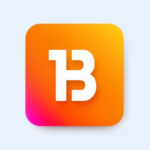Author: Ash Li
Recently total of 112383 Runestones has attracted widespread attention on market. The total transaction volume of Runestones has exceeded an astonishing 1,400 Bitcoins, and the the floor price has also increased. More and more projects are announcing airdrops to Runestones holders, which keeps the popularity of Runestones high. Many people now think of Runestones as golden shovels. So what kind of project is Runestone? How does it relate to the Runes Protocol? This article will deeply explore the Runes Protocol, and look forward to the future ecosystem.
Part 1
Overview of Bitcoin Inscription Ecosystem
History
$ORDI, which was born in March 2023, has opened the door to getting rich by inscriptions. Since then, two more waves of inscription craze have been launched in the second half of 2023. Everyone was immersed in the high emotions of pursuing the inscription. Then what is inscriptions of BTC? What is Ordinals Protocol? What are those BRC-20, ARC-20, SRC-20 and other protocols ending with “20”? And what is rune protocol, and what kind of innovation will rune protocol achieve? Today, let us continue to explore the colorful Bitcoin ecological protocols with these questions.
Brief introduction of protocol
Ordinals Protocol
First released by Casey (@rodarmor) in December 2022, Ordinals Protocol allows data to be engraved on Satoshi, the smallest unit of Bitcoin, including text, pictures, audio, video and other data information. The so-called Bitcoin inscriptions are metadata inscribed on Satoshis using the Ordinals protocol, which is what we often call Bitcoin NFT. For detailed information, you can read the article I wrote before introducing the Ordinals protocol. https://www.spectrumlab.io/zh/reports/看完這篇,你對於ordinals銘
BRC-20 Protocol
The BRC-20 protocol was launched by @domodata, an anonymous developer, on March 8th, 2023. It is a protocol launched based on the Ordinals protocol just introduced. This protocol implements the functions of deploying tokens, minting Mint, and transferring funds by writing the name, quantity, and other information of the token into Satoshi in a specific JSON format. BRC-20 is named after Ethereum ERC-20 and a token issuance protocol based on Ordinals Protocol. Over 30,000 inscriptions were minted till the second day of release, with the number of text types approaching 27,000. The first token of the BRC-20 protocol, called $ORDI, saw incredible gains during the first and second waves of inscriptions. Recently @domodata and @L1Fxyz, founded by him, put forward a new proposal. The proposed changes include the introduction of a self-issuance mechanism, modifications to the deploy inscription, adoption of 5- byte tickers, and establishing a consensus on the burn method for BRC-20 assets. Proposal Link: https://l1f.discourse.group/t/brc-20-proposal-for- issuance-and-burn-enhancements-brc20-ip-1/621。
ARC-20 Protocol
ARC-20 is a colored coin model, which is different from Ordinals Protocol. Each ARC-20 token must be backed by a Satoshi, rather than being distinguished by sorting like BRC-20. It inscribes the information into the transaction script, and the balance is represented by the sat number of UTXO. The transfer function is completely processed by the Bitcoin main network, and all relevant changes in the tokens can be intuitively reflected on the chain. At the same time each ARC-20 token is used as the first “output” of the transaction through instruction operations to avoid being spent as gas fees. But there was a phenomenon of burning assets when wallets didn’t support the protocol at the beginning.
SRC-20 Protocol
SRC-20 Protocol uses the BTC STAMPS Protocol instead of the Ordinals Protocol. The address of SRC-20 is still a Bitcoin address starting with “bc1q” instead of the address we commonly use starting with “bc1p”. The main difference between Stamps and Ordinals is the architecture. The Stamps protocol stores metadata in multi-signed UTXOs. The Ordinals protocol, on the other hand, stores metadata in the SegWit of Bitcoin transactions.
Part2
Runes Protocol
History Background
On May 8th, 2023, the core developer of BTC issued an article claiming that the BRC-20 protocol caused too much garbage and frequent transactions, causing congestion on the BTC network, and the BTC community should take action to stop it. On September 1st, Casey publicly opposed BRC-20 Protocol and hopes that the minting of BRC-20 inscriptions can be stopped. On September 26th, 2023, Casey Rodarmor developed a protocol called Runes as a replacement for BRC-20. This protocol is a FT protocol based on UTXO that enables Bitcoin users to have a good experience. Casey believes that the improved Runes protocol can reduce the phenomenon of large amounts of junk UTXO being created, and Runes protocol is a better, lighter and more concise asset issuance solution than the previous experimental BRC-20 protocol. Therefore, the current phenomenon of creating a large number of “junk” UTXOs due to the popularity of BRC-20 can be avoided.
How Runes are implemented
The balance of Runes tokens is contained directly in UTXO. A transaction contains a protocol message if it contains an output whose script pubkey contains an OP_RETURN followed by a data output representing an ASCII uppercase R. Runes entered into transactions with invalid protocol messages will be burned, allowing future existing upgrades to change the way runes are allocated or created, avoiding previous older clients that incorrectly allocated runes’ balances.
Transfer
The first data output in the protocol message is decoded into an integer sequence, which will contain three types of information: ID, OUTPUT and AMOUNT. The ID specifies which Runes token is being transferred. Each token is assigned an ID when it is created. The ID starts from 1, and the earlier the token is created, the smaller the value. OUTPUT determines which output to assign to. AMOUNT represents the amount of transfer.
Creation
If there is a second data output after the protocol message, the transaction creates a transaction for Runes tokens. The data output of this part will be decoded into two integers, SYMBOL and DECIMALS. It has no effect if there are more other integers. SYMBOL is equivalent to BRC-20’s Ticker, which is the token name. It supports up to 26 characters, and the available characters are only A-Z. DECIMALS is the precision, which determines how many decimal places the Runes token can support. If SYMBOL has not been used, the Runes token will be assigned an ID number. The first “rune” Token ID number created is 1. The three names of BITCOIN, BTC and XBT are disabled. In the Runes protocol creating token with the same name is still not supported.
Compare with other protocols
Casey compared the Runes protocol with other existing Bitcoin Inscription protocols in the following four aspects:
Complexity: How complex is the protocol? Is it easy to implement? Is it easy to be adopted in a large scale?
User experience: Are there any implementation details that negatively impact user experience? Especially protocols that rely on off-chain data.
State Model: UTXO-based protocols fit more naturally into Bitcoin. It minimizes the production by avoiding the creation of “garbage” UTXOs.
Native tokens: Protocols with native tokens are cumbersome and naturally less likely to be widely adopted.
Comparison with existing Bitcoin protocols:
BRC-20: Not based on UTXO and quite complex as it requires the use of the Ordinals protocol for certain operations.
RGB: Too complex, and dependent on off-chain data, which was developed for a long time but not adopted.
Counterparty: There are native tokens required for certain operations, rather than being UTXO based.
Omni Layer: There are native tokens required for certain operations, rather than being UTXO based.
Taproot Assets: A bit complicated and relies on off-chain data.
According to Casey, the Runes protocol is a better and simpler option for creating fungible tokens on the Bitcoin network. In contrast, the BRC-20 protocol is the first experimental protocol for creating fungible tokens on the Bitcoin network. However, this protocol creates a large number of UTXOs causing network congestion. Runes is different from other Bitcoin protocol tokens in that it does not rely on off-chain data to operate. Instead, it is based on UTXO and uses UTXO to track the balance of Runes. Each transfer transaction will be split into different UTXOs, and each UTXO contains a different number of Runes.
Technical features
UTXO model
First of all, the Runes protocol has excellent compatibility and scalability, and can be seamlessly connected with Bitcoin’s UTXO model and second-layer protocols based on it, such as Lightning Network and CKB. Compared with other FT protocols such as BRC-20, Runes significantly improves the efficiency of operations and user experience by simplifying the transaction process and managing token balances directly bound to UTXO.
Token issuance
Runes provides greater flexibility in token issuance, allowing token name lengths from 1 to 28 characters, and employs a variety of innovative issuance mechanisms, including but not limited to fixed total issuance and public inscribing issuance. And Even more expressive issuance methods will be adopted. The fixed total amount method is more centralized, with the issuer directly engraving all Runes and then distributing them. In addition, the public inscription method is based on specific parameter settings, such as block height or timestamp. The number of assets inscribed by the user within the specified time determines the final total amount of the Runes.
In terms of UTXO management, Runes uses the OP_RETURN script to avoid the complexity and security risks that may be caused by the witness part of the transaction, reducing unnecessary UTXO generation, thus improving the overall efficiency of the network. The Runes protocol is designed to reduce the on-chain “footprint” and encourage optimized UTXO usage so that it can be seamlessly integrated with Bitcoin’s infrastructure. The Runes protocol promotes the development and innovation of the Bitcoin ecosystem in a more concise and intuitive way.
User experience
The Runes protocol supports Simple Payment Verification (SPV) wallets, providing users with a lightweight transaction experience that BRC-20 failed to achieve. It also provides developers with a more user-friendly and accessible development environment by providing a reference implementation and emphasizing compatibility with existing Bitcoin scripts and address types. And there may be some details or more innovative parts that have not been disclosed to the public. We can conduct further analysis after the official version of the Runes protocol is released.
Part3
Potential investment opportunities related to Runes Protocol
There are already many Runes protocol projects on the market that are beginning to warm up. Because the official Runes protocol has not yet been released, there are no Runes in the strict sense. These projects are mainly released in the form of Bitcoin NFT. After the Runes protocol is officially launched, they will be distributed through airdrops or 1:1 exchange into runes. Below are some of the early projects about Runes protocol.
RSIC
RSIC utilizes pre-farming. Official tokens cannot be minted until the Runes protocol is launched. RSIC has four reward distribution methods, including fixed rewards, enhanced rewards, random rewards and halved rewards. RSIC uses technologies such as father-son inscriptions, Metaprotocol fields, and recursive inscriptions in the issuance process. This project has the richest gameplay and uses powerful technology, so it has strong playability. Different RSICs have different rarities, which also adds to the randomness. Holding RSIC will obtain the rune tokens issued by the project in the future. The project team will airdrop rune tokens to these pre-farming addresses according to the pre- farming amount after the Runes protocol is officially launched. Twitter user @wutaner created a RSIC_DATA table to calculate the farming amount. The link is as follows: https://docs.google.com/spreadsheets/d/1xlAS5- _XS5aCHSozkcF_SCW8M1Kl2SDeolLWEvK4Sgg/edit? pli=1#gid=308398888
Runestone
Runestone is a project that has attracted much attention after RSIC. Both are pre-farming projects. Runestone is led by @LeonidasNFT, the founder of Ord.io). Its airdrop rules are simple, open and transparent. That is, at the block height of 826600, the Bitcoin wallet needs to hold at least 3 inscriptions, but does not include text and JSON format inscriptions, such as BRC-20 inscriptions.
The Rune Guardians
There are 10,000 The Rune Guardians in total, and different attributes will have different effects on mining. It is worth mentioning that this project will become a real PFP series after Bitcoin halving. The Rune Guardians gameplay is similar to RSIC. It airdrops to Ordinals blue-chip NFT holders, and the project party bears all gas costs.
Rune Alpha
Rune Alpha is an early practical project based on the Runes protocol. It released the experimental platform ahead of schedule. Its minting method is limited in time and unlimited in accordance with the block height interval. And it launched a trading market based on PSBTS technology for the first time. Rune Alpha’s token $COOK will be seamlessly migrated at an 1:1 ratio after the Runes protocol is launched. The project team announced the latest airdrop plan and published a roadmap, which contains many ideas for future construction of runes.
Unicross
$RUFI is the first rune token on @merlinlayer2 that can be converted into runes by converting BRC-20 at an 1:1 ratio. Unicross is committed to supporting Runes Asset minting and protocol indexing. Tokens are being launched fairly, with 25% being airdropped to Merlin chain users and the remainder undergoing the mint phase.
How to participate in the Runes ecosystem:
There are currently many other Runes-concept projects. We have only selected some of the more popular projects for introduction. Founder Casey also decided to deploy tokens 0–9 some time ago, and the specific names are still being solicited from the community. In the future, when the Runes protocol is first launched, the length of all token names will be greater than or equal to 12 characters. Tokens with names within 12 characters will be gradually released. Projects that need it can pay to have tokens with shorter names. After Runes Protocol officially launched, you can participate in the following ways:
1. Directly mint the first 10 tokens from numbers 0–9 deployed by the Casey team. Since the current infrastructure of Ordinals is relatively complete and there are many generation tools, you can synchronize all Ordinals nodes in advance to participate.
2. Hold NFT or other certificates of the above-mentioned pre-farming projects. After the project team deploys the corresponding tokens on the Runes protocol, you will directly receive the corresponding airdrop or 1:1 exchange tokens.
Part 4
Introduction of project Runestone
Among the recent Runes protocol-related projects, the most topical one should be Runestone. On March 9, 2024, a Runestone, the largest Ordinals inscription to date, with a size of 3.97MB, was successfully auctioned for 8 BTC. Its creator @LeonidasNFT (OG of Ordinals and founder of Ord.io) said that all proceeds from the auction and the 2.25 Bitcoins previously raised via Twitter will be used to pay the fee for the Runestone airdrop. Runestone airdropped more than 112,383 Bitcoin addresses, which can be called one of the largest Ordinals airdrop projects in history. This has made the Bitcoin community around the world look forward to the upcoming Runes protocol.
When Leonidas first proposed the idea of airdrops, Casey commented under the tweet to discuss ways to reduce gas consumption. The name of the project also comes from a tweet by Casey. At that time, Casey said that he was developing a feature called Runestone under the Runes protocol. Therefore, Runestone not only has high meme attributes, but also gets implicit support from the founder of the Runes protocol.
Another big factor in Runestone’s popularity is that the project found the largest block on the Bitcoin blockchain, thanks to a partnership with @ordinalsbot and @MarathonDH. The 8 BTC auction transaction of Runestone left its mark on Block 832947: the largest Bitcoin block ever, the largest Bitcoin transaction ever, and the largest Ordinals inscription ever. The proceeds from the auction are used to pay for the airdrop, which also reflects the Runestone project team’s commitment to the entire community.
An important reason why the inscription ecosystem can develop so quickly is fairness. Runestone has been fair since the airdrop, so it has received enthusiastic feedback in the market. Different from the previous BRC20 inscriptions, Runestone has the consensus of users in the Western and Eastern communities. Leonidas also tweeted his thanks in Chinese: “Runestone’s role as a bridge between the East and the West is really eye-catching. I have noticed the efforts and dedication of the Eastern Runestone community. Although I only understand English, this does not prevent me from seeing your Contribution. Without the joint efforts of East and West, Runestone’s achievements today would never be possible.”
There are currently more than ten projects airdropping Runestone holders. Runestone has the potential to become the golden shovel of a new round of rune ecosystem. Twitter user @0xquqi created a comprehensive table to record the summary information of the Rune Stone airdrop. The link is as follows: https://docs.google.com/spreadsheets/d/ 1F27vFEzlJsJtvuaOpgX5YyXEOwfhDDvf4KOSA5m0_5M/ edit#gid=0
Reminder: High-quality projects will be airdropped directly. Those that link to wallets or require authorized signing must be carefully screened.
Part 5
Outlook fot future
Both Runestone and other projects of the Rune protocol have attracted widespread attention from the East and the West recently. These projects not only demonstrate the new technological potential of Ordinals, but also reflect the entire market’s expectations for the Runes protocol. The Bitcoin halving and the launch of the new protocol may start a new round of Bitcoin ecological rise. Can the third wave of inscription rise that the market has been waiting for come smoothly thanks to the popularity of runes? Let’s wait and see!
About us
Bitcoin Square is a Bitcoin ecological and alpha community established in May 2023. We are committed to providing the latest market dynamics, professional market analysis, and a community environment with an investment research spirit.



